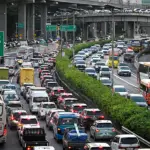Saad Iqbal | 🗓️Modified: December 29, 2016 | ⏳Read Time: 3 min | 👁Post Views: 1023
If water table rise to such a level through capillary action to the surface & root zone, that it cannot conveniently permit an anticipated activity this situation is called Water Lodging.
 |
| Water Lodging, What it is? and How to prevent and Control it? |
Water lodging means the saturation of soil with water. Soil may be regarded as waterlodged when the underground water table goes too high to conveniently permit agriculture and other similar activities.
Water lodging or Water logging is a process that prevent growing of plants in soil. The soil is saturated with water and air cannot get in or in simple words excess water in the root zone.
Causes of Water Lodging
The numerous reasons and causes for water lodging is enlisted below :-
- Inadequate surface Drainage
- Seepage from canal system
- Over irrigation of fields
- Obstruction of natural drainage
- Impermeable clay layer below the soil
- Obliteration of natural drainage
- Inadequate capacity for arterial drainage
- Construction of a water reservoir
- Natural obstruction to the flow of ground water
Preventive Measures to Avoid Water Lodging
- Providing efficient surface Drainage.
Surface drainage is done by grading an area so that water collects and flows to a lower elevation away from the required area. Along with surface characteristics, when it comes to surface drainage, slope is the most important factor to consider. For efficient drainage, paved surfaces should have a minimum 1-percent slope. Turf or landscaped areas should have a minimum slope of 2 percent.
- Reducing percolation from canals.
Technological measures to reduce seepage, leakage and percolation losses in irrigation include the lining of canals and watercourses, and promoting modern irrigation technologies such as pipe, sprinkler and drip systems.
 |
| Re-modeling of Surface Drains |
- Restriction of irrigation.
- Adoption of sprinkler method for irrigation
Sprinkler irrigation sprays water over the fields. A sprinkler system consists of a pumping unit, a pressurized pipe conveyance network, and a set of nozzles. Its favorable features are: high level of field WUE; uniform water distribution over the field, which increases yields; and minor dependence on the condition of the soil surface. When sprinkler irrigation is practiced during the night, water losses can be further reduced due to lower evaporation losses. However, sprinkler systems have high initial capital costs and require good maintenance. Running costs are high due to energy consumption during operation. Moreover, sprinkler irrigation is not equally effective for all crops.
 |
| Canal Lining |
- Removing obstructions in natural drainage.
All embankments, grades, dikes or obstructions of whatever kind constructed or maintained within the city that is causing obstruction to the natural surface drainage of water must be avoided





















